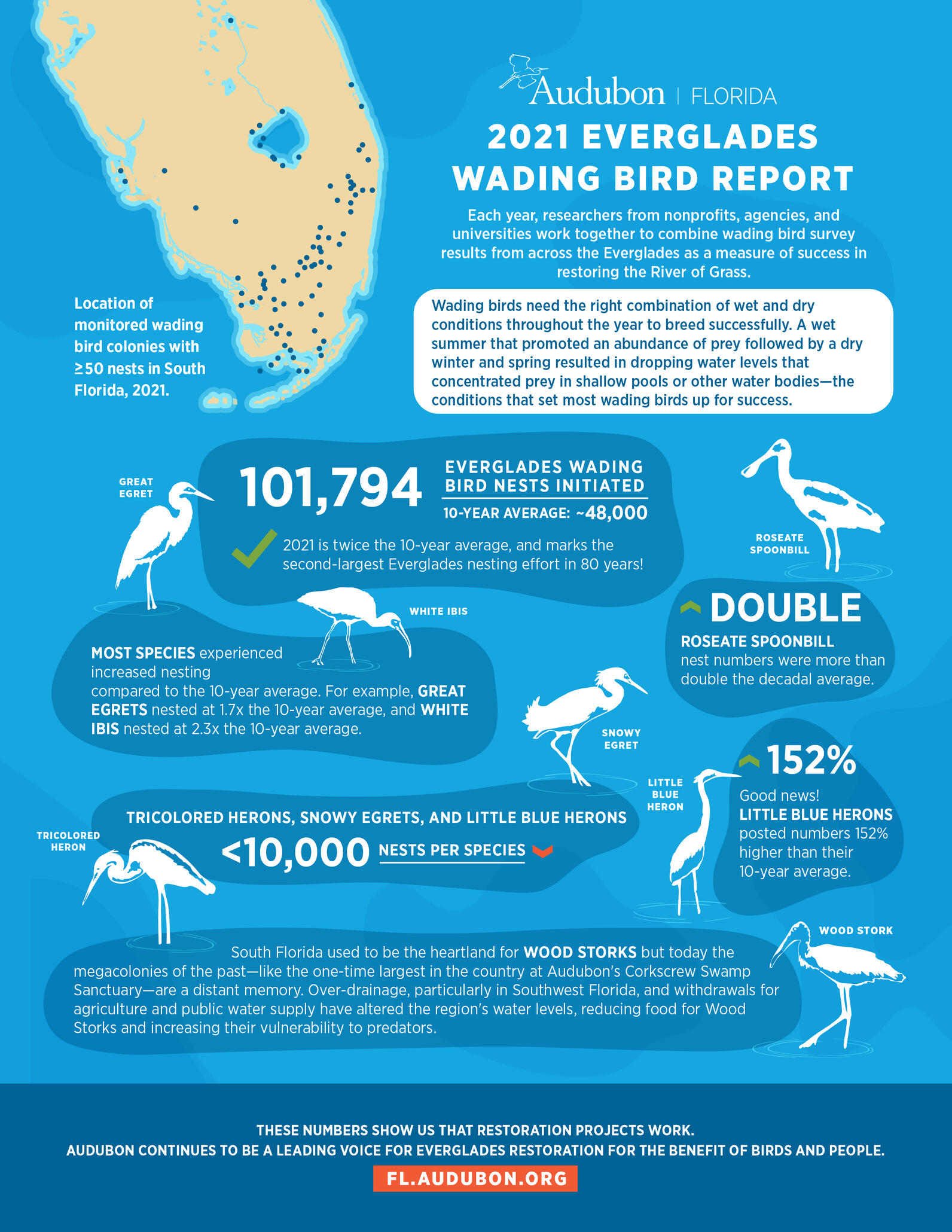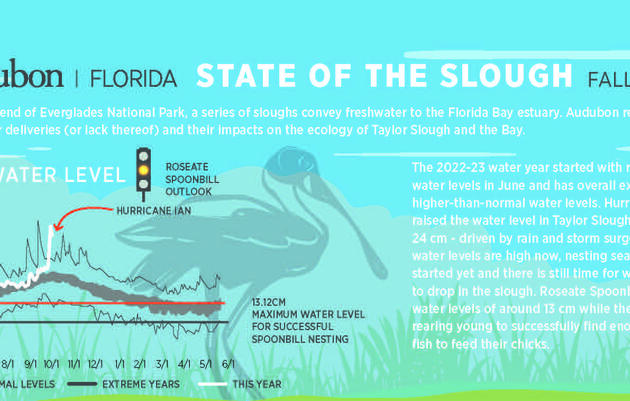Click here to read Audubon's 2021 Wading Bird Report
Wading birds are important indicators of ecosystem health in the River of Grass, and each year the South Florida Water Management District – in collaboration with Audubon Florida and other partners – synthesizes wading bird survey data from across the Everglades to examine system-wide trends. When wading birds nest in large numbers and fledge chicks most years, they tell us that our efforts to improve the hydrology of South Florida ecosystems are successful.
Wading birds need the right combination of wet and dry conditions throughout the year to breed successfully. A wet summer that promoted high prey production followed by a dry winter and spring resulted in dropping water levels that concentrated prey in shallow pools or other water bodies—the recipe for a successful breeding season. When prey is concentrated, wading birds expend less energy to feed their voracious chicks. As a result, scientists estimated that wading birds initiated almost 102,000 nests in the 2021 nesting season —more than twice the 10-year average of 48,000 nests.
“Well-timed rainfall in the Central Everglades resulted in big nesting efforts for the region's iconic wading birds—proof that if we get the water right, the birds will respond. The data tells us that if we restore habitats, birds can succeed, and it is our duty to give them a fighting chance,” says Kelly Cox, Audubon Florida’s Director of Everglades Policy. “Thanks to extreme rainfall, Wood Storks shared in these successes—an outlier as they still struggle in most years to raise chicks to fledging, especially in Southwest Florida's over-drained landscape."
Climate change-induced trends in seasonal rainfall patterns, including stronger and more frequent storms, will continue to negatively impact wading bird nesting.








